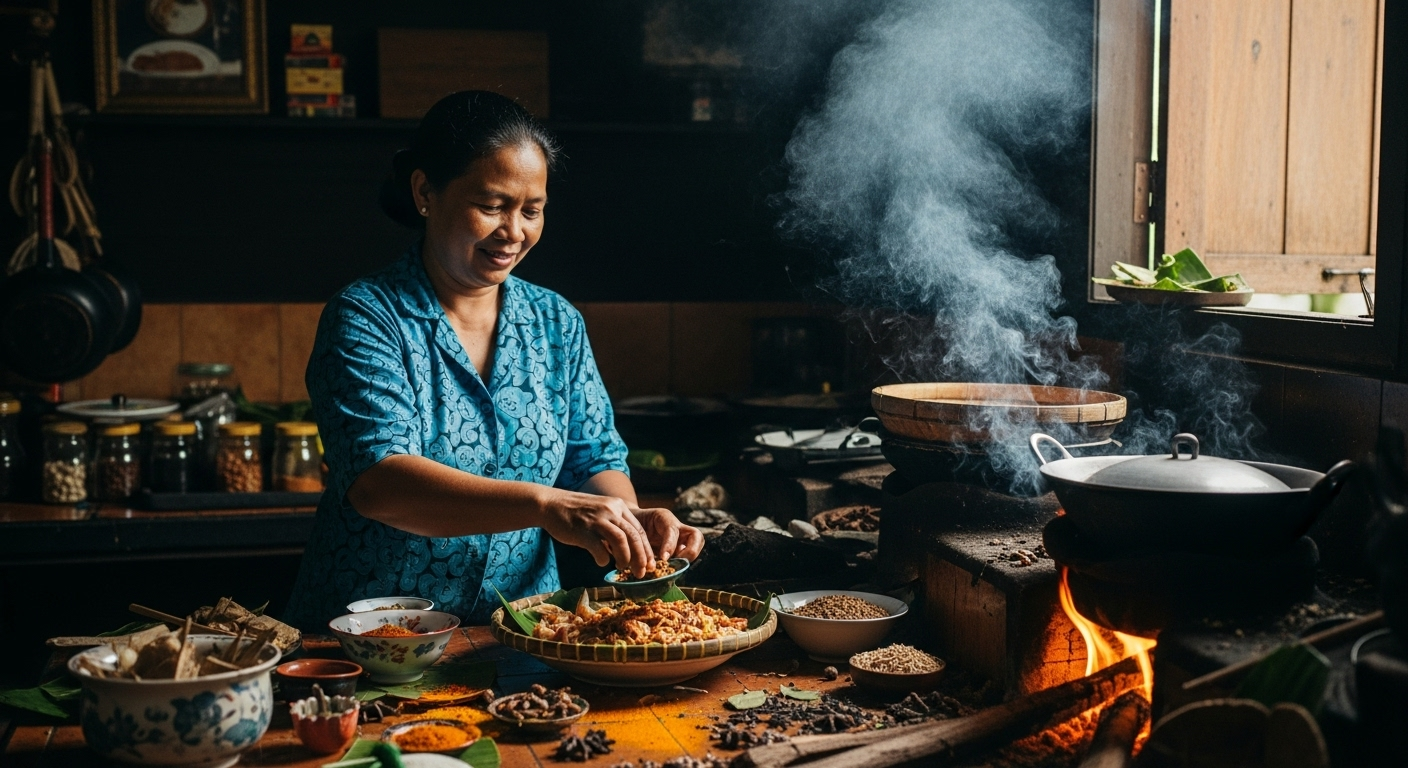Diving into the Indonesian Culinary Scene: A Gastronomic Adventure
Indonesia is not just a paradise for beach lovers and adventure seekers. It is also a haven for food enthusiasts. This article will take you on a delectable journey exploring the gastronomic delights of Indonesian cuisine and the unique cooking techniques that make it stand out.

A Flavorful Ride: The Diversity of Indonesian Cuisine
Indonesian cuisine is a rich tapestry of flavors, owing to the country’s cultural diversity and vast geographic expanse. The archipelago boasts over 300 ethnic groups, each with its own unique culinary traditions. From the spicy Rendang of the Minangkabau people to the savory Satay from Java, Indonesia offers a symphony of flavors as diverse as its islands.
A Peek Into The Indonesian Kitchen: Cooking Techniques
The diversity of Indonesian cuisine extends to its cooking techniques. Traditional methods include ‘Panggang’ or grilling, often used for Satay, and ‘Rebus’ or boiling, common for soups. The ‘Pepes’ method, where food is wrapped in banana leaves and steamed or grilled, infuses the dish with a distinct, aromatic flavor.
Savoring the Street Food Culture: Warungs and Kaki Lima
Street food, locally known as ‘Warungs’ or ‘Kaki Lima’, is an integral part of Indonesian food culture. These small stalls offer a variety of dishes, from ‘Nasi Goreng’ (fried rice) to ‘Soto Ayam’ (chicken soup). Street food in Indonesia is not just about quick and affordable meals; it’s about experiencing the nation’s culinary soul.
Indonesian Beverages: More Than Just Coffee
Indonesia’s beverage scene is as exciting as its food. ‘Kopi Luwak’, or civet coffee, may be the country’s most famous export, but traditional drinks like ‘Jamu’ (herbal medicine) and ‘Bir Pletok’ (ginger beer) offer unique tastes. These beverages, rich in flavor and tradition, perfectly complement the country’s diverse dishes.
Understanding Indonesia’s Sweet Tooth: The Dessert Scene
Indonesian desserts, often based on rice, palm sugar, and coconut, offer a sweet conclusion to any meal. ‘Klepon’ (sweet rice balls), ‘Pisang Goreng’ (fried bananas), and ‘Es Teler’ (fruit cocktail) are just a few examples. These desserts, with their unique textures and flavors, provide a delightful end to the Indonesian culinary journey.
Extra Bites: Quick Insights
-
Indonesia is home to the world’s most expensive coffee, Kopi Luwak.
-
‘Nasi Goreng’, a simple fried rice dish, was named the 2nd best food in the world by CNN in 2017.
-
‘Sambal’, a chili-based sauce, is a staple in Indonesian cuisine, with hundreds of variations across the country.
-
Indonesia is the world’s largest archipelago with over 17,000 islands, contributing to its culinary diversity.
Indonesian cuisine is a celebration of the country’s diversity, heritage, and love for food. From its flavorful dishes and unique cooking techniques to its vibrant street food culture and exciting beverage scene, it offers a gastronomic adventure like no other. So the next time you’re seeking a culinary journey, let the aromatic and diverse flavors of Indonesia guide your palate.




